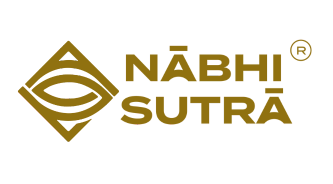Incha: The Forgotten Ayurvedic Bath Ritual for Radiant Skin
A natural scrubber rooted in tradition, wellness, and sustainability.
In an age where plastic loofahs and synthetic skincare dominate the bathroom shelf, there’s a quiet revival of ancient wellness tools — and Incha is one of them. Known across Kerala and South India for centuries, Incha (also spelled Enja or Inja) is a natural bath scrubber made from the bark of the Acacia caesia shrub.
But Incha isn’t just a tool. It’s a part of Ayurvedic self-care. A gentle, sustainable, and skin-loving ritual that nourishes the body far beyond the surface.
What is Incha?

Incha is a herbal exfoliating scrubber made from the fibrous bark of the Acacia caesia plant, traditionally harvested, sun-dried, and split into strands. When softened with water, these fibers turn into a gentle yet effective body scrubber, ideal for removing dead skin cells, improving blood circulation, and cleansing the skin — all without harming its natural barrier.
The Ayurvedic Significance of Incha?
In Ayurveda, bathing (Snana) is a daily dinacharya (ritual) meant to refresh not just the body, but the mind and energy channels. Before bathing, an oil massage known as Abhyanga is recommended to release toxins from deeper tissues. Here’s where Incha plays a key role — it helps in:
Detoxifying the skin after oil massage
Unclogging pores and allowing the skin to breathe
Stimulating lymphatic flow
Supporting the body’s natural exfoliation and rejuvenation process
Incha vs Vetiver (Khus): What’s the Difference?
Though both are rooted in Ayurveda, Incha and Vetiver scrubbers serve different purposes:
Feature |
Incha |
Vetiver |
Made from |
Acacia caesia bark |
Vetiver (Khus) roots |
Texture |
Coarse, fibrous |
Softer, fragrant |
Best for |
Deep exfoliation, post-oil massage cleansing |
Cooling the skin, gentle daily use |
Additional properties |
Anti-bacterial, detoxifying |
Anti-inflammatory, aromatic |
Incha is more exfoliating and cleansing, while Vetiver is more cooling and calming.
Health & Skin Benefits of Using Incha
Here’s why Incha deserves a space in your bathing ritual:
Natural Exfoliation
Gently removes dead skin cells, promoting smoother, glowing skin.
Improves Blood Circulation
The scrubbing action supports circulation, leading to a natural, healthy glow.
Anti-Bacterial Properties
Acacia caesia is known for its ability to cleanse skin without disrupting its natural microbiome.
Baby-Safe & Skin-Friendly
So gentle, it's traditionally used for newborn babies after Ayurvedic massage.
Supports Detoxification
Cleanses the skin post-oil massage by removing toxins released onto the surface.
How to Use Incha in Your Routine
Step 1: After oiling your body with Ayurvedic oils (Abhyanga), let it sit for 15-30 minutes.
Step 2: Wet the Incha and start scrubbing in circular motions. Focus on dry or congested areas.
Step 3: Rinse thoroughly. No need for additional body wash, unless desired.
Step 4: Moisturize with Ayurvedic cream or ghee-based lotion like Shata Dhauta Ghrita.
Use 2–3 times a week for best results.
Incha is not just a bath accessory — it is a symbol of Ayurvedic wisdom , self-care, and sustainable living. Whether you're looking to enhance your Abhyanga ritual, switch to a chemical-free exfoliator, or reduce your plastic usage, Incha is a simple yet powerful way to reconnect with nature and your skin’s natural rhythm.


